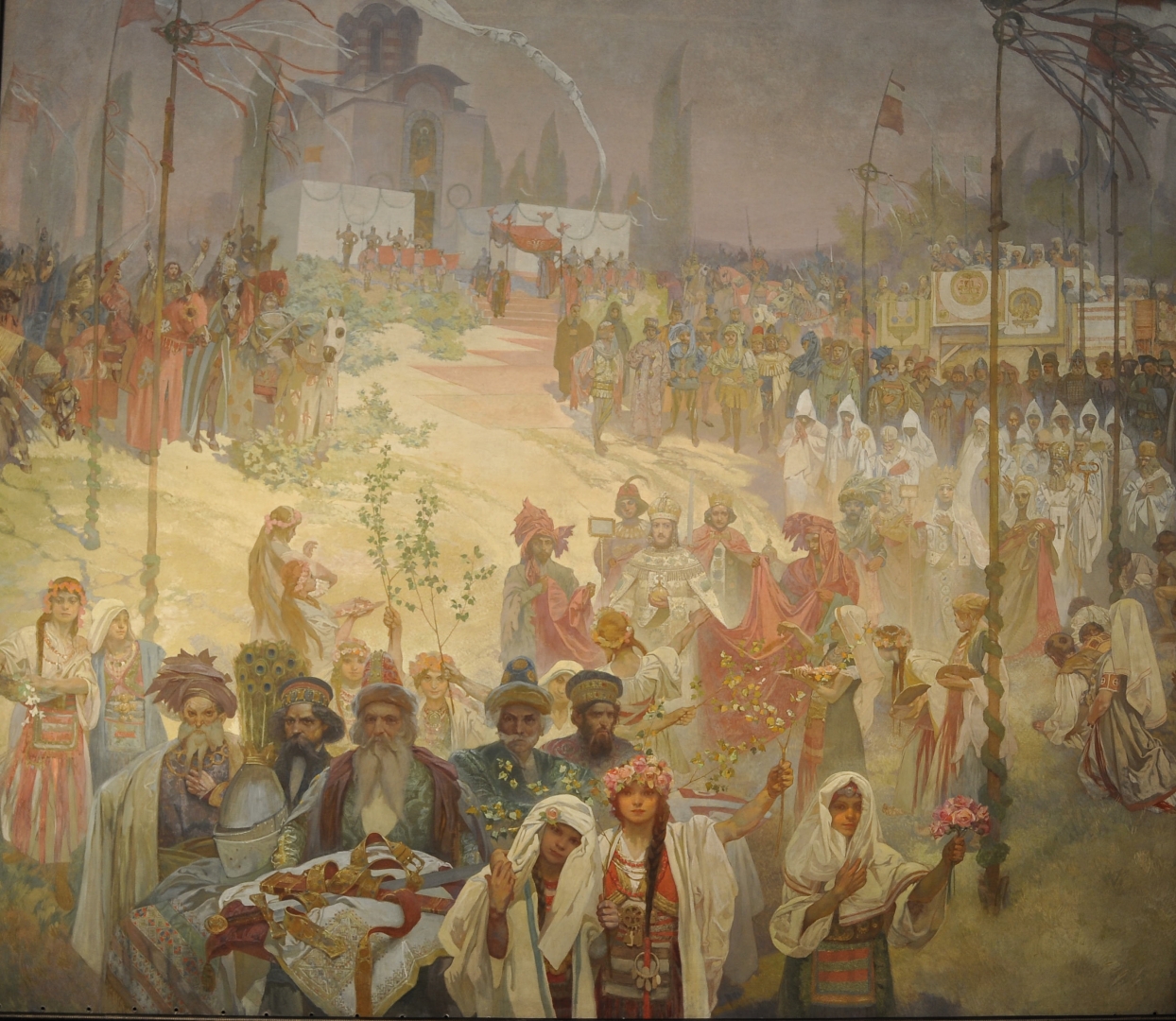THE CORONATION OF STEFAN IV. DUŠAN
The most significant Serbian ruler was Stepan IV Dushan, who in the 14th century expanded Serbian territory into other areas, creating a vast empire stretching from the Danube to the Gulf of Corinth. During Stepan Dushan’s reign, Serbia became the most powerful state in the Balkans. The Code of Tsar Stepan Dushan represents a significant monument of Slavic legislation.
The painting captures moments after the coronation of Stepan Dushan on Easter 1346 in Skopje. The procession begins at the bottom of the painting, where nobles carry the tsar’s helmet, shield, and sword. The tsar is dressed in lavish coronation robes and holds a scepter in his hand. The tsar's son, Stepan Urosh, who was named king of all Serbian and coastal lands that day, follows behind him. Dominating the white parts of the procession are the tsar's wife Jelena, the Serbian patriarch, and priests. The festive procession continues with ambassadors from prominent courts of Europe. In the left center of the painting stand dignitaries and envoys of Charles IV, sending their personal congratulations to the tsar, expressing joy for the coronation, noting that all of Europe finds itself in the hands of two Slavs.
The ceremonial event is concluded by the figure of a girl with a crown and long braid in the center of the canvas, depicted in a typical style of Mucha’s Art Nouveau creations.

